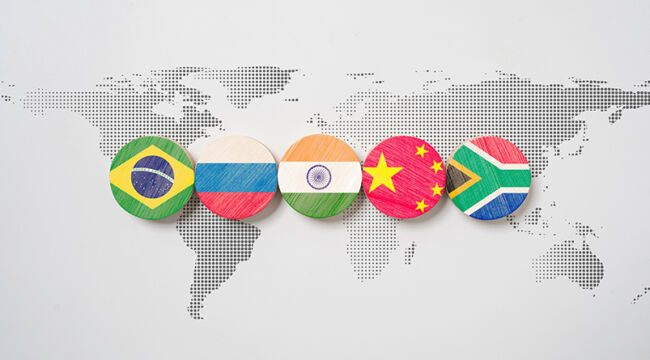BRICS Seize World’s Commanding Heights
The BRICS Leader’s Summit ended on August 24 with a momentous decision to expand the membership of BRICS for the first time since 2010.
Saudi Arabia, the United Arab Emirates, Egypt, Argentina, Ethiopia, and Iran were all admitted to membership effective January 1, 2024. Both Brazil and India have some reservations about this move.
But in the end, Russia and China used their muscle to push through the new members despite objections. The BRICS are now BRICS+ with eleven full members and on their way to greater political power and a new currency union.
This is a momentous development, though its effects will take time to fully manifest themselves.
As a result of this expanded membership, the new BRICS currency will emerge in the year ahead.
This is because all current and prospective BRICS members and the entire Global South (including members of the Shanghai Cooperation Organization and the Eurasian Economic Union) are suffering from the weaponization of the U.S. dollar.
They fear that their dollar-denominated reserves may be frozen by the U.S., as recently happened to Russia.
Their solution is to start a new currency union big enough to offer a diverse range of goods and services (and eventually bonds) that bypasses the dollar.
It won’t happen overnight and the new currency will face challenges, but the process is getting underway.
The implications of expanded BRICS membership actually go far beyond the currency union.
With the additions of Saudi Arabia, Iran and UAE, the BRICS have now effectively surrounded the Persian Gulf. With the addition of Egypt and Saudi Arabia, they now effectively control the Red Sea and the Suez Canal.
Meanwhile, the addition of Argentina gives BRICS control of the Straits of Magellan for transit from the Atlantic to the Pacific Oceans (good luck in the Drake Passage; I’ve been there. It’s a daunting body of water).
BRICS are moving closer to the dual visions of Halford Mackinder, the geopolitical theorist whose notion of the World Island and Heartland were both based in Asia — and to Alfred Mahan, the naval strategist whose theory of sea power emphasized control of critical straits and other sea chokepoints.
The BRICS are consolidating physical control of both the land and sea pivots of history.
Expanded BRICS membership also marks the beginning of the end of the petrodollar era. Membership of Saudi Arabia in the BRICS is a large step in that direction. This is why the admission of new members and the launch of a new currency cannot be viewed in isolation.
They are two parts of a common project. The expanded membership is precisely what makes the new currency more feasible.
This is all happening under the noses of U.S. policymakers who seem ignorant both of history and current events.



Comments: